Nurikabe: Trickster That Manifests Itself As Invisible, Impassable Wall In Japanese Old Beliefs
A. Sutherland - AncientPages.com -Nurikabe is among the most popular Yokai monster creatures in Japanese mythology and folk traditions.
Left: Nurikabe, a mythological creature of the Japanese folklore. Montage with a Japanese forest. source; Right: Nurikabe - Painted Bronze Statue on Shigeru Mizuki Road, Japan. sourceLeft: Nurikabe, a mythological creature of the Japanese folklore. Montage with a Japanese forest. source; Right: Nurikabe - Painted Bronze Statue on Shigeru Mizuki Road, Japan. source
It is a yokai, a mysterious force that symbolizes suspicion and strangeness. It defines various supernatural phenomena, objects, and bizarre creatures that dwell in the borderlands and spaces located "in-between."
The belief in a trickster, nurikabe, mainly targets individuals while traveling alone was first recorded in Japan long ago.
In ancient times, it was natural for many travelers to lose their way and feel lost in the darkness unless they possessed their light source.
For many of them, the only light that revealed the path came from the moon and the stars.
In such moments, not only outlaws and wild animals were a potential danger to travelers during the night. With the only goal of blocking roads and delaying foot travel as long as possible, the Yokai nurikabe symbolizes a constant threat to travelers and gives them fear and uncertainty.
The nurikabe can be met on the road anytime, especially at night. Normally invisible, it completely prevents and blocks a path or the main road, forcing travelers to surround it. It can also suddenly appear as an obstacle inside a house.
Any attempt to find a different path or go around, under, or over is in vain. As a wall, the nurikabe could suddenly lengthen or mysteriously rise and move.
It is said that the encounter with a Nurikabe can mean getting lost for a day, and its presence is an unnerving but never deadly experience.
Nurikabe's Appearance Changed With Time
Originally, this yokai was described as an invisible being that manifested as a sizeable invisible wall.
During the Edo period (1603 - 1868), the final period of traditional Japan, artists began to illustrate the creature in a more physical form, giving it a hybrid-like appearance, with arms, legs, and two little eyes.
The nurikabe began to look like a grotesque monster rather than a flat, never-ending wall.
"It is said that if you take a stick and strike at the bottom of it, it will disappear, but if you hit at the top part, nothing will happen."
"A personal experience with a nurikabe-like encounter that occurred when he [Shigeru Mizuki (1922 – 2015), artist and historian] was in New Guinea during World War II. Exhausted and alone, he is walking through the "dark jungle" at night, eager to rejoin his companions and wary of enemies, when suddenly he feels as if he is stuck in "coal tar," unable to move forward or to either side. Completely at a loss for what to do, he sits down to rest for a few minutes, and when he tries to walk again, it is as if nothing at all had happened..." (F.M.Dylan, 'The Book of Yokai')
Written by – A. Sutherland - AncientPages.com Senior Staff Writer
Updated on January 16, 2024
Copyright © AncientPages.com All rights reserved. This material may not be published, broadcast, rewritten or redistributed in whole or part without the express written permission of AncientPages.com
Expand for referencesReferences:
F.M.Dylan, "The Book of Yokai"
More From Ancient Pages
-
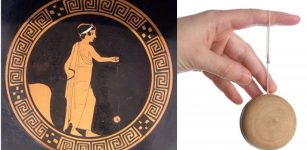 Oldest Yo-Yo Dates Back To 400-500 B.C
Ancient History Facts | May 13, 2019
Oldest Yo-Yo Dates Back To 400-500 B.C
Ancient History Facts | May 13, 2019 -
 Tyrfing And Gram: Two Magical Swords And Hervor’s Death In Norse Mythology
Featured Stories | Apr 23, 2016
Tyrfing And Gram: Two Magical Swords And Hervor’s Death In Norse Mythology
Featured Stories | Apr 23, 2016 -
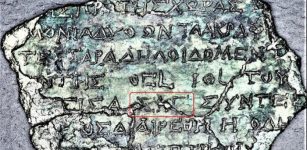 Humans Have Been Predicting Eclipses For Thousands Of Years, But It’s Harder Than You Might Think
Archaeology | Apr 20, 2023
Humans Have Been Predicting Eclipses For Thousands Of Years, But It’s Harder Than You Might Think
Archaeology | Apr 20, 2023 -
 Statues Of Serapis Sky God And Asclepios God Of Medicine Unearthed In Ancient City Of Kibyra
Artifacts | Nov 26, 2020
Statues Of Serapis Sky God And Asclepios God Of Medicine Unearthed In Ancient City Of Kibyra
Artifacts | Nov 26, 2020 -
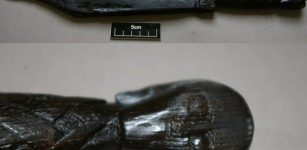 Extraordinary 1,000-Year-Old Viking Sword Discovered In Cork, Ireland
Archaeology | Sep 29, 2017
Extraordinary 1,000-Year-Old Viking Sword Discovered In Cork, Ireland
Archaeology | Sep 29, 2017 -
 Idol Of Pachacamac Inca God Reveals Its Colors
Archaeology | Jan 21, 2020
Idol Of Pachacamac Inca God Reveals Its Colors
Archaeology | Jan 21, 2020 -
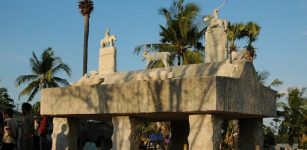 Thousands Of Remarkable Megaliths On The Sumba Island
Featured Stories | Aug 30, 2017
Thousands Of Remarkable Megaliths On The Sumba Island
Featured Stories | Aug 30, 2017 -
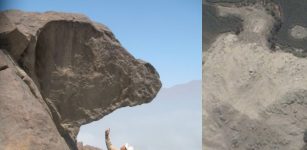 Rare Animal-Shaped Mounds Discovered In Peru
Archaeology | Apr 2, 2012
Rare Animal-Shaped Mounds Discovered In Peru
Archaeology | Apr 2, 2012 -
 Resourceful Pre-Hispanic Society In Bolivia Had Flourishing Agriculture Despite Harsh Environment Of The Andes
Archaeology | Dec 24, 2017
Resourceful Pre-Hispanic Society In Bolivia Had Flourishing Agriculture Despite Harsh Environment Of The Andes
Archaeology | Dec 24, 2017 -
 Gigantic Ancient Palace Unearthed In Mexico’s Valley Of Oaxaca
Archaeology | Mar 29, 2017
Gigantic Ancient Palace Unearthed In Mexico’s Valley Of Oaxaca
Archaeology | Mar 29, 2017 -
 Mythical Shield-Maidens Did Exist – Evidence Of Female Viking Warriors Discovered
Archaeology | Sep 9, 2017
Mythical Shield-Maidens Did Exist – Evidence Of Female Viking Warriors Discovered
Archaeology | Sep 9, 2017 -
 Mysterious Jawbone May Represent Earliest Presence Of Humans In Europe
Archaeology | Dec 7, 2022
Mysterious Jawbone May Represent Earliest Presence Of Humans In Europe
Archaeology | Dec 7, 2022 -
 Medieval Mythbusting – New Research Rewrites History Of Glastonbury Abbey
Archaeology | Nov 23, 2015
Medieval Mythbusting – New Research Rewrites History Of Glastonbury Abbey
Archaeology | Nov 23, 2015 -
 Fascinating Millennia Old Natufian Culture: Funerals With Flowers, Food And Pounding Sound Of Mortars
Civilizations | Aug 22, 2015
Fascinating Millennia Old Natufian Culture: Funerals With Flowers, Food And Pounding Sound Of Mortars
Civilizations | Aug 22, 2015 -
 Oldest Aqueduct Dated To 3rd Century BC Discovered In Rome
Archaeology | Apr 4, 2017
Oldest Aqueduct Dated To 3rd Century BC Discovered In Rome
Archaeology | Apr 4, 2017 -
 Why Is Caganer, The Pooping Man Part Of The Catalonian Christmas Tradition And Nativity Scene?
Christmas Traditions | Dec 18, 2024
Why Is Caganer, The Pooping Man Part Of The Catalonian Christmas Tradition And Nativity Scene?
Christmas Traditions | Dec 18, 2024 -
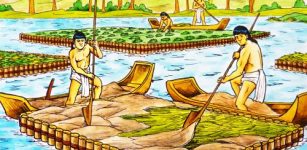 Chinampas: Artificial Islands Created By The Aztecs To Improve Agriculture
Ancient History Facts | May 17, 2016
Chinampas: Artificial Islands Created By The Aztecs To Improve Agriculture
Ancient History Facts | May 17, 2016 -
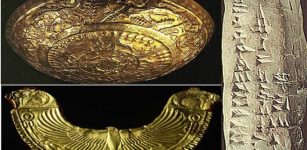 Forgotten Ancient Ugarit: One Of The Flourishing And Oldest Cities Of Canaan
Featured Stories | Jun 15, 2023
Forgotten Ancient Ugarit: One Of The Flourishing And Oldest Cities Of Canaan
Featured Stories | Jun 15, 2023 -
 On This Day In History: Black Death Arrived In Britain – On June 24, 1348
News | Jun 24, 2016
On This Day In History: Black Death Arrived In Britain – On June 24, 1348
News | Jun 24, 2016 -
 Mysterious Figurine Of Seated Olmec Woman With Polished Hematite Disk
Artifacts | Sep 12, 2015
Mysterious Figurine Of Seated Olmec Woman With Polished Hematite Disk
Artifacts | Sep 12, 2015

